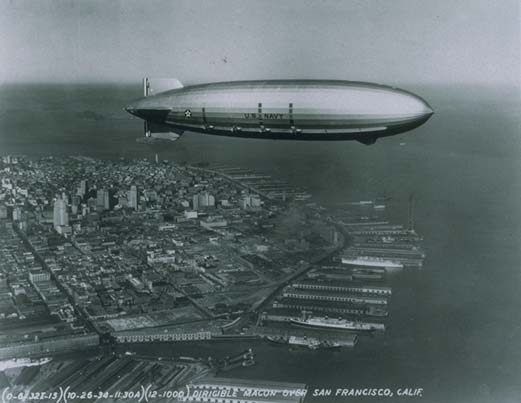Like most people, I assumed that the crashes of various post-WW1 dirigibles had already ruined the future of lighter-than-air flight well before the Hindenburg caught fire. I had forgotten about the US Navy’s fleet, including the Akron, Shenandoah, and the Macon:
The US government has added the crash site of the most powerful flying aircraft carrier ever built to the National Register of Historic Places, 75 years after the event.
The airship USS Macon — comparable in size to the even more famous and equally doomed liner Titanic — suffered storm damage and crashed into the ocean off Point Sur, south of San Francisco, exactly 75 years ago yesterday. The huge dirigible’s remains and those of her embarked biplane fighters now lie 1500 feet below the waves in the Monterey Bay National Marine Sanctuary. However, all but two of the 83 men aboard survived the crash and were rescued by responding waterborne ships.
“The USS Macon and its associated Sparrowhawk biplanes are not only historically significant to our nation’s history, but have unique ties to our local communities, where public museums highlight the airship’s history,” said Paul Michel, Monterey Bay National Marine Sanctuary superintendent. “The National Register listing highlights the importance of protecting the wreck site and its artifacts for further understanding our past.”




